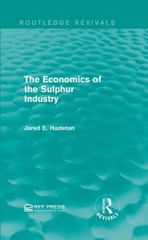Solve the following questions please in summarise work please I will do appreciate
Question 3 (12.5/50 points) Consider a standard "Lucas trees" economy. There is a large number of identical households (normalized to 1) who wish to maximize expected life-time utility, given by Eo B'In(q). 1-0 There is only one non-storable commodity that agents consume, call it coconuts. There are also infinitely lived objects, that we call trees, which yield coconuts. There is no production in this world. Agents can buy their shares at some price that they take as given. Let the supply of shares of the trees be normalized to 1. The holder of one share of the tree in period f is a claimant to the fruit d. We assume that d, follows a Markov process. For any t, di E D = {d1, ....dy}. Let Dy = Pr(di+1 = did, = d;). Assume that do is given. a) Characterize the AD equilibrium price of one coconut in period & after a certain history realization. b) Set up the problem of the agent in a recursive form, and include the fol- lowing asset: a claim, to be bought in period f - 1 after history hy-1, that pays one coconut in f if state j occurs. What is the equilibrium price of this asset? c) What is the equilibrium price of a bond, bought in period f - 1 after history hy-1, which will deliver one coconut (with certainty) in period ? d) What is the equilibrium price of an option, bought in period t - 1 af- ter history hy-1, that allows you to sell shares of the tree in period t, at the predetermined price z?Question 2 (17.5/50 points) Consider the Mortensen-Pissarides model in continuous time. Labor force is normalized to 1. Unemployed workers, with measure a Bu(c). 1=0 Each household has an initial capital stock To at time 0, and one unit of produc- tive time in each period, that can be devoted to work. Final output is produced using capital and labor services, yt = F(k, m), where F is a CRS production function. This technology is owned by firms whose number will be determined in equilibrium. Output can be consumed (c) or invested (i). We assume that households own the capital stock (so they make the investment decision) and rent out capital services to the firms. The depreciation rate of the capital stock (r, ) is denoted by 5. Finally, we assume that households own the firms, i.e. they are claimants to the firms' profits. The functions u and F have the usual nice properties. a) First consider an Arrow-Debreu world. Describe the households' and firms' problems and carefully define an AD equilibrium. How many firms oper- ate in this equilibrium? b) Write down the problem of the household recursively. Be sure to care- fully define the state variables and distinguish between aggregate and individual states. Define a recursive competitive equilibrium (RCE). For the rest of this question focus again on an Arrow-Debreu setting. c) In this economy, why is it a good idea to describe the AD equilibrium capital stock allocation by solving the (easier) Social Planner's









